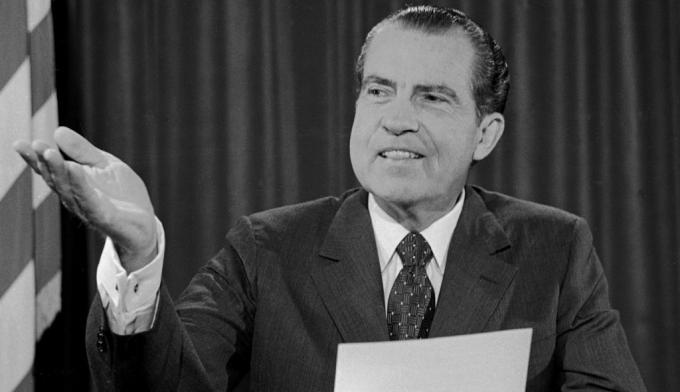On September 24, 2019, the President of the Chamber of Deputies of U.S, Nancy Pelosi, requested the opening of a impeachment against the president donald trump.
There are many dissatisfactions with the president, but the peak was the denunciation of the content of Trump's phone call to Volodymyr Zelensky, president of Ukraine.
see more
Councilor proposes the creation of 'Day of Batman' in…
Senate ends employment relationship between churches and priests;…
In it, the head of state planned to organize an investigation of the son of the former vice president and Democratic pre-candidate, Joe Biden.
In December of the same year, the Chamber of Deputies voted in favor of impeachment. However, the Senate has yet to decide whether or not to remove Donald Trump, after his act under a potential name of rivalry in the presidential elections 2020.
But before that, let's understand a little bit about the impeachment process in the United States!
What is impeachment?
With the fear that presidents had the practice of abuse of power, the founders of the US territory inserted in the Constitution a means that would allow the removal of someone from office.
Thus, according to the Constitution, a president can be removed if “treason, bribery or other serious crimes and misdemeanors” are identified.
However, there is no record of presidents removed from office as a direct result of the impeachment.
One of them, Richard Nixon, even announced his resignation even before his removal. The other two, Andrew Johnson and Bill Clinton, received their impeachment from the House but not the Senate.
How does this process work?
The impeachment kickoff takes place in the Chamber. There, the deputies discuss and vote against or in favor of the impeachment resolution, through a greater number of members of the House.
To this end, the Constitution provides a foundation on how to proceed with the process.
In the case of Donald Trump, the House Intelligence Committee verified whether the American president had exercised abuse of power by exerting pressure on Ukraine with the intention of carrying out an investigation that the would benefit.
Prior to the issuance of the formal evidence report, weeks of confidential testimony and television hearings were held.
With the report in possession, the House Judiciary Committee drafted its charges. Thus, by voting 23 to 17, the Chamber accepted, on December 18, 2019, the accusations of abuse of power and attempted obstruction of the investigation.
And in the Senate?
In the Senate, the distribution of roles is as follows: members of the House exercise the role of prosecutors, senators are jurors, and the President of the Supreme Court commands.
As in history, the president authorizes defense attorneys to present witnesses and supporting documents.
Can the Senate refuse to pass judgment?
There is an argument as to whether the Constitution presupposes a trial in the Senate.
In any case, current Senate legislation requires it.
How are the parties distributed?
Currently, the US Chamber is made up of 431 members.
Of the total, only three of the 233 Democrats voted against one of the two articles of impeachment. As for the Republicans, 195 voted against the two articles and a couple did not vote. Former Republican, now Independent Justin Amash voted in favor of both articles.
In the 1990s, in 1998, when Republicans made up the majority of the House, the vote was also in greater volume for the impeachment of Clinton, a Democrat.
What happens if Trump is impeached?
The situation is very distant. However, if the Senate removed Donald Trump from office, Vice President Mike Pence would take inauguration and would be the head of government until the end of the US president's term, on January 20, 2021.
It would be a case similar to that of Brazil, in which former president Dilma Rouseff was impeached and vice president Michel Temer took office.
Impeachments in the USA
In the history of the United States of America, only three presidents have been impeached.
Andrew Johnson, in 1868, and Bill Clinton, in 1998, went through the process in the House of Representatives, but were acquitted in the Senate. The only one who didn't, Richard Nixon, in 1974, asked to resign before the vote.
Bill Clinton

Bill Clinton's impeachment approval came after the discovery of an extra-marital relationship between the former president and White House intern Monica Lewinsky. At the time, aged 22, the girl confided to a Pentagon official and the case became public.
Even denying it at first, Clinton had to confess later and the fact led to his impeachment.
Richard Nixon

Three decades earlier, Republican Richard Nixon was the target of impeachment. In the year 1974, Richard Nixon was involved in Watergate.
The nomenclature referred to the headquarters building of the National Committee of the Democratic Party, which in 1972 was attacked by five men. The goal was to get information from the caption dome.
The spying group's relationship with the president's advisors was discovered, which led to the outbreak of his impeachment. However, he resigned earlier.
Andrew Johnson

In the year 1868, Andrew Johnson was first US president to be impeached.
Not content with cabinet opposition, the president fired, at his own expense, Secretary of War, Republican Edwin M. Stanton, without prior consultation with Congress.
The act led to the movement of the Chamber of Deputies for his impeachment, being almost acquitted in the Senate.
Read too:
- How many stars does the US flag have? see what they mean
- presidentialism
- State, Nation and Government



